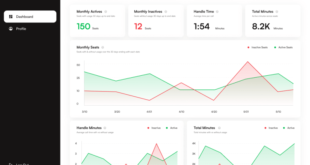
Vercel, which provides a platform for building front-end applications, today announced an additional $ 40 million in series B funding, bringing its total raised to $ 61 million. The funding will be primarily used to expand the reach of an application development platform designed to make it simpler to build applications using Next.js, a framework based on an implementation of JavaScript known as React originally pioneered by Facebook.
This latest round of funding was led by GV, with participation from new investors Greenoaks Capital, Bedrock Capital and Geodesic Capital. Existing investors include Accel Partners and CRV.
The Vercel platform, based on Next.js, provides developers with a p-review capability that makes it possible to visually inspect the front end of web applications and websites within a repository before they are deployed. Vercel will be extending that capability to enable end users to inspect web applications and pages before they are deployed, Vercel CEO Guillermo Rauch said.
That capability will make it easier for developers and end users to collaborate on digital business transformation initiatives that most often involve modernizing web applications, Rauch said. He added “We want to enable collaboration across multiple personas.”
Vercel is making a case for separating the development of the front end of applications from the back end as part of an effort to accelerate application development. The back end of most applications rarely changes, while the end user application experience needs to constantly evolve and improve.
Separating the front-end development of an application from the back end makes it easier to update applications while continuing to access myriad backend applications via application programming interfaces (APIs).
That core capability is the primary reason organizations ranging from Airbnb to TripAdvisor now build the front end of their web applications using the Vercel platform, Rauch said. It’s a lot easier to find and retain developers that understand JavaScript than it is to hire developers with, for example, Java skills. In fact, while most back-end services are still developed in Java, the front ends of web applications are already mostly built using frameworks based on some form of JavaScript.
The transition to the React framework based on JavaScript is also accelerating because Google has adjusted its page ranking system to include how well a website or application performs according to its Google Web Vitals score. The slower the application or website, the lower the ranking, which in turn affects things like how well an ecommerce site might rank for a specific search term.
Next.js in the form of the Vercel platform not only enables organizations to build and deploy web applications that are more engaging, it also enables them to deploy applications that are significantly faster than those built using legacy web application frameworks.
Of course, Next.js is not the only approach to building a modern web application. For example, some organizations favor Gatsby, a framework for building React applications based on the open source Angular framework.
Regardless of the framework employed, the rate at which web and mobile applications are being modernized is accelerating in the wake of the economic downturn brought on by the COVID-19 pandemic. Organizations of all sizes are discovering the need to engage users more proactively online simply to stay relevant at a time when individuals are still largely working from home to combat the spread of the pandemic.
GV general partner Tyson Clark said the venture capital firm was attracted to Vercel because it has been looking to invest in an application development startup since the concept of JAMstack began to gain traction among web developers. (JAMstack is an acronym for employing JavaScript, APIs, and markup languages to accelerate the development of web applications.)
Vercel takes that concept to the next level by making it easier to build web applications using a combination of serverless computing functions and headless backend services, Clark said, adding “We’re bullish on serverless.”
Clark said that ideally the lead investors would like to see Vercel emerge as a public company, but he also noted that it’s unlikely this sector of a crowded application development field will be able to sustain more than two public companies.
It’s also unclear to what degree providers of content delivery networks (CDNs) that currently factor in the deployment of web applications will respond to the rise of startups that make it easier to build these applications. They may opt to build their implementations of open source frameworks or acquire a vendor such as Vercel.
Regardless of the path chosen, it’s clear the rate of innovation enabled by platforms that focus on the development of frontend applications is accelerating. The issue now isn’t so much whether to embrace React frameworks for building these applications as it is to what degree and how soon.



